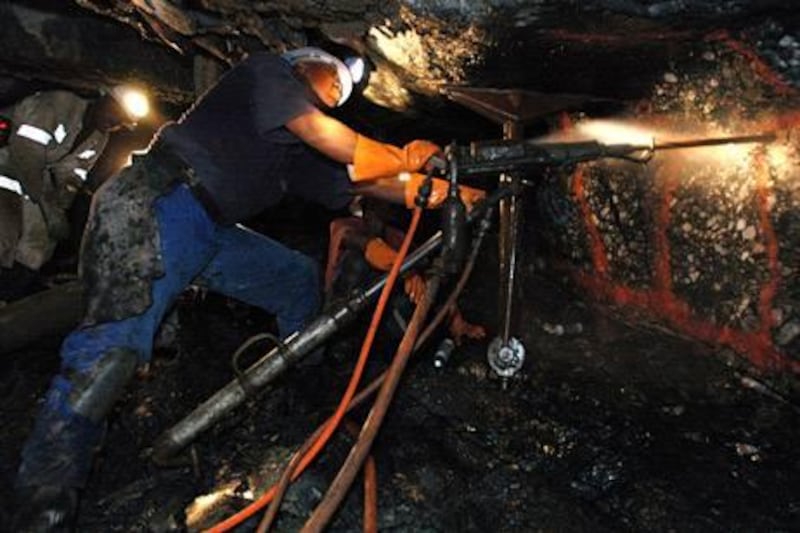Gold mining executives are a conservative lot. Not only will they see the glass half empty, but they will also draw your attention to the smudge along the rim and point to the fruit fly drowning in your drink.
The reason for this is that they have to rebuild the factory, as it were, on a daily basis. As gold ore is recovered, new excavations are made, tunnels propped up and many thousands of tonnes of earth removed as they burrow ever deeper into the ground. It's a frighteningly expensive, not to say dangerous, undertaking.
So it's heartening that PricewaterhouseCoopers (PwC), the global financial firm, says in its 2012 Gold Price Report that most mine executives are pretty optimistic for the coming year; many see the price of bullion reaching US$2,000 (Dh7,346.40) at some stage over the next 12 months.
Speculation over where the price of gold is going is always something of a parlous game. Everyone has an opinion. But gold stocks themselves are starting to look attractive, relative to the product they sell, says PwC.
This is because the conventional gold investments - either in bullion (such as bars or jewellery) or gold exchange-traded funds (ETFs) - make the investor money purely on the movement of the gold price. As it goes up, so does the value of the underlying asset: the trinkets around your neck or the ETF in which you have invested.
This makes ETFs and bullion relatively simple to trade in - you base your investment purely on where your analysis tells you the price of gold per ounce is headed. Mining stocks, however, require a range of calculations that would leave even me with a throbbing head after a couple of minutes.
Analysts must take into account such variables as the ore grade and how much gold can be expected to be found in a particular mine. And how much a company must spend to get it out of the ground, a factor influenced by everything, such as the hardness of the rock and whether groundwater must be pumped out to prevent the mine from being flooded.
Strikes are another hazard. Most mines operate 24 hours a day to stay in the black. A work stoppage leads not only to lost production, but can also damage equipment as maintenance comes to a halt.
Governments confound things, too, with the annoying habit of jacking up taxes at every opportunity, as Ghana, a major producing nation, has just done. A final hazard is currency fluctuations. South African mines pay their way in rands, but sell their product in US dollars. A small change in the rand/dollar exchange rate will play out in the company's bottom line.
It's hardly surprising, then, that investors prefer a good night's sleep and put their money in ETFs rather than mining companies. As PwC points out, this is the first gold bull run where ETFs have been available. As a result, by the end of last year, gold had moved 11 per cent over the past 12 months, while gold mining stocks had fallen more than 10 per cent over the same period. In previous gold booms, mining company shares would run ahead of the price of gold. Clearly this is not happening now.
This is not good news for gold miners. They need a constant infusion of investor capital to pay for their underground factory building. So they are having to find other ways to lure cash and for this reason, are now paying dividends at a rate never seen before.
"It's another marker for the history books as this will be one of the largest increase in dividend payments in gold stock history," says PwC.
By the end of last year, dividend payments had increased 44 per cent on the year before. The US-based Newmont Mining, one of the world's largest gold producers, is set to give back shareholders 4 per cent on every dollar invested, while South Africa's AngloGold Ashanti has upped its dividends by 86 per cent.
Some companies are even considering paying out shareholders in actual gold. All this suggests that it is time to once again consider the companies that dig the stuff out of the ground, rather than bullion itself.
As for gold itself, few doubt that it is looking pretty comfortable on top of the bull. Central banks are now net purchasers of gold, whereas 10 years earlier they were practically selling it from a lunch cart on the pavement. China, especially, is gathering it up. In September last year, it bought 56 tonnes, a six-fold increase over the year.
With world production remaining steady at about 2,500 tonnes a year, it does not seem likely the market will be flooded anytime soon.
Gavin du Venage is a business writer and entrepreneur based in South Africa.






